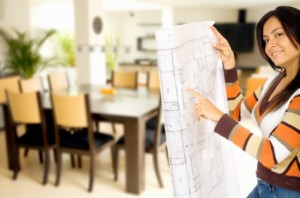Establishing Remodel Cost – Upper Marlboro Home Remodeling Critical First Step

Why is establishing remodel cost one of your most important remodeling tools?
Determining your budget at the beginning of your project helps in the following ways:
- Prevents wasting time and money on a project that turns out too expensive for your current budget.
- Allows you to more carefully analyze bids from general contractors.
- Forces you to decide emphatically on what you want and what you can afford.
- Puts you in charge of the project costs, not the general contractor or subcontractors.
- Provide your designer (if needed) with cost parameters that help keep costs reasonable.
Establishing remodel cost is a four step process. Follow these guidelines, and you will save yourself time, money and a heart attack when the final bills arrive!
-
Establish Remodel Project Scope
Your first step is taking an educated guess on the “scope,” or definition, of the project. Are you looking for a complete kitchen remodel, or just some new paint and cabinet hardware? Are you going to replace a few shrubs in the yard or install a complete outdoor wildlife conservatory? Use a bunch of different sources (books, magazines, websites, design professionals, etc.) to write out a few bullet points of each component of your Home Remodeling, its current condition, and what you want the end product to be. For example: Kitchen Cabinets: Existing – Natural wood, yellowing finish, no door hardware. After Remodel – Paint-grade cabinets, white, all new hinges and door pulls. Follow this formula for each piece of the project.
-
Quantify Units
Now that you have a general idea of the project scope, assess quantities of materials you will need. Pull out your tape measure and go to town, identifying critical measurements like square footage, lineal footage, etc. Back to our cabinet example: Kitchen Cabinets – 20 standard cabinet doors and 6 drawers, 38 lineal foot of uppers and lower cabinet faces and frames, 26 door pulls, 20 pairs of hinges, etc. Do this quantity analysis for each piece of your remodel. Take it one at a time. Trust me, it is not too much. Carefully analyzing your measurements and units forces you to think logically through the remodel process piece by piece.
-
Research Prices
This is my favorite part of any remodel project. It gives me an excuse to visit every hardware store and material supplier that relates to my scope of work. Take your list established in step one combined with the quantities establishes in step two, and tour the vendors in your area one-by-one. Carefully research different options, what you like and don’t like, and most importantly, unit cost. You will quickly discover whether or not your remodel dreams are feasible and within your budget. And believe me, it is better to confirm this sooner rather than later. You will also quickly gauge which suppliers and employees know their business, and which are just there to fill space and look helpful. This information is critical once you begin purchasing material. (I will cover effective purchasing in a subsequent posting).
-
Create Spreadsheet
Now you are ready to “estimate” your remodel. I suggest creating a spreadsheet on the computer, as it reduces the chances of a calculation error. Begin by listing each piece of your project. You can either use some industry standard construction cost codes (Google “Construction Cost Codes“) or just think through your project from floor to ceiling or ceiling to floor. Once you formulate a list, put your units from step two in a column next to each item. Then use the third column to input your cost per unit for each item. Lastly, multiply the unit column by the cost column and discover your material cost for each item. Labor is a bit more complex to estimate, but a few quick calls to knowledgeable subcontractors in your area will give you a general idea of labor costs. Once the material and labor costs are totaled, I suggest adding a mark-up if you are going to use a general contractor (10-20%), and an owner contingency cost (5-10%) to the project for those items that inevitable come up in the course of construction.
I encourage you to analyze costs for any Home Remodeling project long before you commit to the time, effort and money it takes to complete such a project.
Article Source: http://EzineArticles.com/2863447










